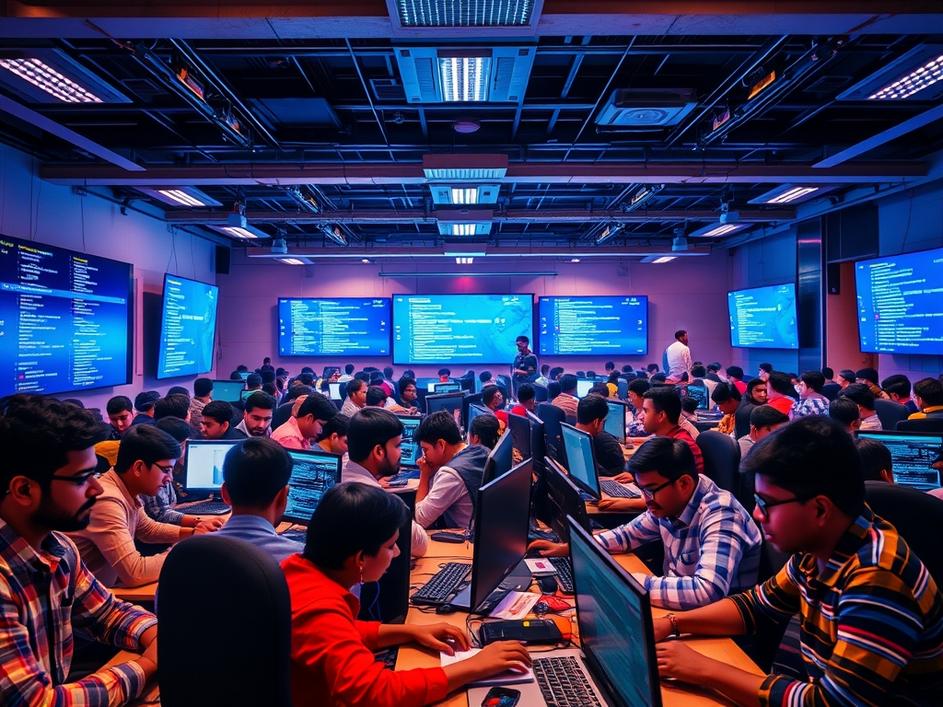


We are a digital agency helping businesses develop immersive, engaging, and user-focused web, app, and software solutions.
2310 Mira Vista Ave
Montrose, CA 91020
2500+ reviews based on client feedback

What's Included?
ToggleIt sounds great, right? A “Smart City.” The idea conjures up images of seamless traffic, efficient services, clean energy, and a general upgrade to urban living. When Jaipur, India, was designated for its own Smart City project back in 2015, the promise was huge. We pictured cleaner streets, better connectivity, and technology making daily life easier. But there was another big promise too: doing all this while keeping the city’s amazing history intact. Jaipur, after all, is the “Pink City,” famous worldwide for its beautiful, old architecture and rich heritage. The whole point was to blend the future with the past, making the city modern without losing its soul. It was a vision that made perfect sense, especially for a place like Jaipur that draws people globally for its unique charm.
Jaipur isn’t just any city. It’s a living museum. Its streets are lined with historic buildings, ornate facades, and the iconic pink hues that tell centuries of stories. When you talk about “smart development” here, it’s not just about laying down new cables or installing new sensors. It’s about doing it with extreme care, respecting every stone and every carving. The Smart City project for Jaipur was supposed to be a shining example of how a city could embrace technology while also preserving its priceless heritage. It was an opportunity to show the world that progress doesn’t have to mean tearing down the past. But here’s the tricky part: putting modern tech into very old buildings is a delicate dance. It requires careful planning, skilled hands, and a deep understanding of what makes these structures special. The challenge was immense, but so was the potential for a truly unique urban model.
Fast forward some years, and the dream seems to have hit a few snags. Instead of perfectly integrated tech and preserved heritage, many parts of Jaipur now tell a different story. You can see it in the “verandahs in ruins,” once grand and welcoming, now crumbling or damaged. And then there’s the “tangle of cables.” What was supposed to be a neat, hidden infrastructure has often ended up as a messy web of wires draped haphazardly over ancient walls, creating an eyesore and, let’s be honest, looking pretty unsafe. This isn’t just a small oversight; it’s a fundamental disconnect between the grand vision and the ground-level execution. These visible signs of neglect and disorder stand in sharp contrast to the carefully crafted plans and the high-tech promises. It makes you wonder: how did we get from a smart vision to this un-smart reality?
From what we can see, it feels like there might have been a few key breakdowns. First, planning. Was there enough detailed groundwork done? Did the people designing the smart city infrastructure truly understand the specifics of each old building, or was it a one-size-fits-all approach? Integrating new systems into heritage sites isn’t like building from scratch; it needs specialized knowledge and methods. Second, coordination. “Smart City” projects often involve many different departments and contractors. If these groups aren’t talking to each other, or if one is rushed, mistakes happen. Maybe the people laying cables weren’t the same ones responsible for heritage preservation, and communication broke down. Third, priorities. In the push to show progress and get things done quickly, sometimes the “smart” part – the thoughtful, careful, respectful part – gets lost. It’s easy to focus on installing the tech, but much harder to do it in a way that truly honors the existing environment. It’s a complex problem, and it points to the challenges of managing large-scale urban development in historically rich areas.
Jaipur’s situation isn’t unique, sadly. Cities all over the world struggle with balancing growth and heritage. What’s happening in Jaipur offers some clear lessons. It shows us that “smart” isn’t just about the latest gadgets; it’s about smart planning, smart execution, and smart respect for what’s already there. We need more than just big ideas; we need meticulous detail work, strong oversight, and a commitment to quality, especially when dealing with irreplaceable history. This means involving heritage experts from the very beginning, working closely with local communities, and perhaps taking things a bit slower to get them right. It’s about understanding that a truly smart city doesn’t just install new tech; it enhances the existing urban fabric, making it better, not just different. The ultimate goal should be a city that thrives both technologically and culturally, where the past and future don’t just coexist, but truly complement each other.
The story of Jaipur’s Smart City project, with its damaged verandahs and tangled wires, is a powerful reminder. It tells us that building a “smart” city is more than just throwing technology at urban problems. It requires a deep appreciation for a city’s soul, its history, and its unique character. True smartness lies in thoughtful integration, in making sure that every step forward doesn’t inadvertently erase the invaluable past. It means understanding that sometimes, the simplest solutions are the smartest, and that careful preservation is just as vital as modern innovation. As cities worldwide look to the future, Jaipur’s experience offers a crucial lesson: let’s aim for a future where technology serves our cities, but never at the expense of their irreplaceable heritage. A truly smart city is one that honors its roots while reaching for the stars, gracefully weaving new possibilities into its existing, beautiful tapestry.



Leave a reply